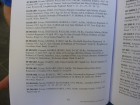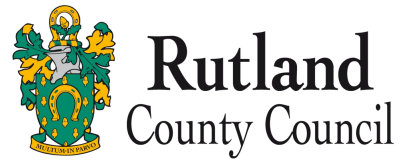George Henry, DCM Hubbard
View George Henry, DCM on the Commonwealth War Graves Commission website
Known information
George Henry Hubbard, a regular soldier from the start of the First World War, received the Distinguished Conduct Medal (DCM) for bravery under fire during the Battle of Aubers Ridge in 1915. He was born in Alconbury Weston in Huntingdonshire on 13 April 1894, the son of Charles Hubbard and his wife, and step-brother to Charles Henry Read who also died in the First World War. The family moved to Tinwell where George grew up and later on to Stamford. George was a farm labourer before joining the Northamptonshire Regiment on 1 January 1913, initially posted to the 1st Battalion and later transferring to the 7th. He sailed for France on 12 August 1914 arriving at Le Havre the following morning as part of the British Expeditionary Force. He fought at Mons, Aubers Ridge, Loos, and Ypres. George was awarded the Distinguished Conduct Medal and the Russian Medal of the Order of St. George for his actions on 9 May 1915 at Aubers Ridge. The citation stated: "For conspicuous gallantry in twice crawling out from his trench under heavy fire in order to pass orders to other companies." George's own version of the exploit was given in a letter home, in which he wrote: "On the morning of the 9th of May, the regiment had orders to take the German trenches at Aubers Ridge. We arrived at the trenches on the 8th and had to carry several ladders and lots of other things for the purpose of getting out of the trenches. We had two companies in the front line of trenches, and two in reserve. I was doing orderly to the adjutant when the first two companies went over, and the other two took their place in the front line. While we were going along the communication trench Colonel Dubbin was hit with a hard piece of earth which was thrown from the burst of a shell, and we all thought he was wounded. I had a piece hit me at the same time, but it did no damage. The regiment tried to take the German trench, but found that the barbed wire was not cut, and we could not get through. The colonel gave the adjutant a message to be sent to the officer out between our lines and the Germans, and he asked me to take it if I thought it was possible. I took it, and when I reached the captain I found him and his servant dead, so I crawled about until I found another officer, and I gave him the message, and as soon as he got it he was wounded in the foot. He sat up to cut his boot off, and was shot again in the chest, but he signed my messages, and I crawled back again to the colonel. While I was doing so, I bound several of the wounded up, and the Colonel saw me and said he would do what he could for me. As soon as ever I got back again the adjutant asked me if I would try and take another one, and I told him I didn't want to, but I would try. I managed to find another officer, and gave him the message, and, coming back, brought a wounded man back with me, and then when I got into the trench I helped to bind the wounded up. Then the regiment of the Black Watch had a go at taking the trench we couldn't take and they found the same obstacle as us. That is how I got the medals." In Rutland and the Great War, George Phillips writes that George was killed by a shell on 31 July 1917 during the Battle of Givenchy. But that battle in northern France had taken place more than two years previously, in December 1914. In fact on 31 July 1917 the 7th Northants were taking part in the big offensive that became known as the Third Battle of Ypres (Passchendaele). The battalion war diary records how the Northants attacked German positions in Shrewsbury Forest near the Menin Road before dawn broke on 31 July. But the men became disorientated in the darkness and came under concentrated fire from German machine guns, suffering heavy casualties. At this point the Commanding Officer, Lieutenant Colonel Edgar Mobbs, went forward and with a handful of men charged an enemy machine gun post. Mobbs was mortally wounded, one of 254 men killed, wounded and missing that day. George Hubbard was one of them. His body was never recovered and so he is remembered on Panel 43 of the Menin Gate. The name of Lieutenant Colonel Mobbs is also on the Gate. A former rugby player, Mobbs had been Captain of England and Northampton Saints before the war and after initially being refused a Commission because of his age, formed his own Company of sportsmen who became known as Mobbs' Own. George, who had married a Lucy Robinson while on home leave on 19 August 1916, at St Laud's Church, Sherington, Buckinghamshire is also remembered on Tinwell's war memorial.
George Hubbard's medals, including his DCM and the Russian Medal of St George, 4th class, were sold at auction in 2004 for £2,800.
See below for lots of additional information.

|
Do you know something about George Henry, DCM that hasn't been mentioned? You can add any new information and images as a contribution at the bottom of this page. |






.jpg)

.jpg)





.png)


.jpg)





Please wait